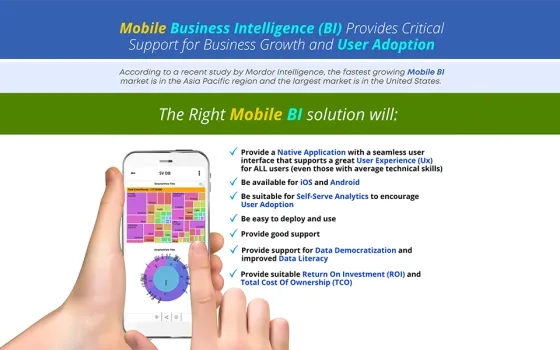In today’s rapidly evolving and interconnected business landscape, companies heavily depend on a multitude of applications to optimize operations, boost productivity, and fuel growth. As organizations embrace a diverse array of applications, ensuring seamless communication and interaction between them becomes essential. This is where application integration takes center stage.
Application integration facilitates the efficient collaboration of different software applications, systems, and services, offering businesses a comprehensive and unified perspective on their data and processes. This integration eliminates data silos, streamlines workflows, and enhances decision-making.
This article delves into a thorough exploration of application integration, covering its significance, components, as well as various techniques and patterns. While providing a comprehensive overview of application integration, special emphasis will be given to mobile applications, given their indispensable role in modern businesses. Continue reading to explore the realm of application integration and its profound impact on mobile apps.
What is Application Integration?
Application integration is the intricate process of enabling disparate software applications, systems, or services to communicate and collaborate, resulting in a unified and synchronized system. This process facilitates the smooth exchange of data and functionality between diverse applications, empowering businesses to streamline processes, eradicate data silos, and enhance overall efficiency.
By establishing connections between disparate systems and ensuring a consistent flow of data, application integration empowers organizations to attain a comprehensive view of their operations. This, in turn, contributes to improved decision-making and heightened productivity.
In the contemporary business environment, organizations leverage a diverse array of applications to oversee various facets of their operations, including customer relationship management (CRM), enterprise resource planning (ERP), human resource management (HRM), and more. Due to the distinct origins and data structures of these applications, they cannot inherently communicate with each other. Application integration serves as the bridge, ensuring that these systems can harmonize and share information seamlessly without the need for manual intervention.
As businesses continually embrace new applications and technologies, the necessity for robust application integration strategies becomes increasingly pronounced. In the context of the modern business landscape, characterized by the growing significance of mobile applications, integration solutions must also address the unique requirements of mobile apps. This includes aspects such as real-time data access, support for multiple platforms, and scalability.
Objectives and Advantages of Application Integration
The fundamental goals of application integration encompass the streamlining of business processes, enhancement of data sharing and collaboration, improvement of decision-making, cost reduction, and increased efficiency. A detailed exploration of each objective reveals the associated benefits.
Integration of diverse applications allows businesses to automate workflows, eliminating redundant and manual tasks. This not only saves time significantly but also minimizes the risk of errors, enabling employees to concentrate on more critical business tasks.
Application integration optimizes processes by automating activities such as data entry, scheduling, and reporting, resulting in heightened efficiency and productivity.
- Enhancing Data Sharing and Collaboration:
Application integration addresses the imperative need for accurate and timely information in today’s data-driven landscape. By ensuring data consistency across all systems and eliminating data silos, integration facilitates easier access to and sharing of information.
Improved collaboration is achieved through a unified view of data and processes, fostering cross-functional communication, transparency, and collaboration between departments. This equips organizations to navigate swiftly through fast-changing environments.
- Improving Decision-making:
Application integration plays a pivotal role in improving decision-making by providing a comprehensive and unified view of data and processes. Integrating various applications enables businesses to gain insights into their operations and make informed, data-driven decisions.
Consolidation of data from multiple sources into a single dashboard enables organizations to identify trends, patterns, and opportunities more effectively, enhancing their decision-making capabilities through the utilization of artificial intelligence and machine learning.
- Reducing Costs and Increasing Efficiency:
Automation of workflows and elimination of manual tasks through application integration contribute to significant time and cost savings, allowing businesses to prioritize critical tasks.
Integration mitigates data duplication and inconsistencies, leading to improved data accuracy and reduced operational costs.
A flexible and scalable infrastructure provided by integration assists businesses in scaling their operations efficiently, thereby reducing IT costs and ensuring quick adaptation to changing business needs.
Types of Application Integration
Application integration can generally be categorized into three main types: data integration, process integration, and presentation integration.
Each integration type serves a distinct purpose, offering specific benefits to businesses. By selecting the appropriate integration strategy, organizations can optimize processes, foster collaboration, and enhance decision-making.
Let’s delve into each type of application integration in greater detail below.
- Data Integration
Data integration is the process of combining data from diverse sources into a unified view, facilitating easier access and analysis. This type of integration is crucial for businesses utilizing different applications, such as CRM, ERP, and HRM systems, to manage data.
Various techniques, including Extract, Transform, and Load (ETL), data replication, and data virtualization, can achieve data integration. ETL entails extracting data from diverse sources, transforming it into a unified format, and loading it into a target system.
Data replication copies data from one system to another, while data virtualization creates a virtual layer, allowing users to access data from multiple sources as if it were a single database. A unified view of data enables businesses to gain insights into their operations, identify trends, and make informed decisions.
- Process Integration
Process integration connects different applications to automate business processes, a critical need for businesses managing diverse operational facets. Techniques such as Application Programming Interfaces (APIs), Service-Oriented Architecture (SOA), and Business Process Management (BPM) can achieve process integration.
APIs enable communication between applications, while SOA provides a framework for creating services usable across different applications. BPM involves modeling, automating, and optimizing business processes.
Process automation leads to improved productivity, reduced errors, and enhanced scalability. By automating business processes, organizations reduce manual tasks, improve efficiency, and respond swiftly to market changes.
- Presentation Integration
Presentation integration merges various user interfaces into a unified user experience, aiding businesses using applications with different interfaces. Techniques such as web portals, Single Sign-On (SSO), and web services achieve presentation integration.
Web portals offer a unified interface for accessing multiple applications, while SSO allows users to access various applications with a single set of credentials. Web services enable different applications to share data and functionality through a standard interface.
By providing a unified interface, businesses simplify the use of multiple applications, enabling users to concentrate on their tasks. Presentation integration enhances the user experience, lowers training costs, and boosts productivity.
Components of Application Integration
To achieve integration goals effectively, various components are employed. Let’s delve into the key components of application integration in greater detail below.
- Application Programming Interfaces (APIs)
APIs encompass a set of protocols, routines, and tools for constructing software applications. They facilitate communication and interaction among different applications, allowing businesses to integrate multiple systems seamlessly. APIs establish a standard interface for accessing data and functionality across applications, simplifying data sharing and workflow automation.
Businesses leverage APIs to connect diverse applications, such as CRM, ERP, and HRM systems, fostering a unified operational view. Overall, APIs play a crucial role in application integration by offering a secure and scalable means of linking diverse systems.
Connectors and adaptors are software components that facilitate communication between different applications. Connectors provide a framework for integrating diverse applications, while adaptors enable connectivity to various data sources. These components offer standardized methods for connecting different systems.
Connectors establish a framework for integrating applications, streamlining data sharing and workflow automation. Adaptors empower applications to link to diverse data sources, ensuring accessibility and sharing of data across systems.
- Data Transformation Tools
Data transformation tools are software components that enable businesses to convert data from one format to another. They ensure seamless data sharing between applications, even if they employ different data formats.
Organizations rely on data transformation tools to standardize data formats, promoting consistency across diverse systems. By transforming data between formats, businesses can seamlessly share data and automate workflows, reducing manual tasks and enhancing efficiency.
Integration middleware software serves as a platform for integrating diverse applications, systems, and services. It introduces a layer between applications, facilitating communication and interaction.
Integration middleware establishes a framework for connecting applications, ensuring shared data and automated processes. This centralized platform manages various integration components, including APIs, connectors, adaptors, and data transformation tools.
Utilizing integration middleware, businesses can establish a unified and coordinated system, leading to improved decision-making, enhanced productivity, and cost reduction.
Application Integration Techniques and Patterns
Various techniques and patterns are employed for application integration, each offering a distinct approach to connecting diverse applications and systems.
Some widely utilized techniques and patterns include point-to-point integration, hub-and-spoke integration, federated integration, service-oriented architecture (SOA), and event-driven architecture.
- Point-to-Point Integration:
This technique directly links two applications by developing custom interfaces between them, facilitating communication and data sharing. While effective for integrating pairs of applications, it can become intricate and challenging to maintain as the number of applications increases.
- Hub-and-Spoke Integration:
Involving the connection of multiple applications to a central hub or middleware, the hub-and-spoke technique employs connectors and adaptors. This scalable and highly flexible approach enables applications to communicate and share data, allowing businesses to effortlessly add or remove applications as needed.
Federated integration connects multiple applications without a central hub or middleware, utilizing APIs to enable data and functionality sharing. This technique is prevalent among businesses with a substantial number of applications that require connection and management.
- Service-Oriented Architecture (SOA):
SOA is an architectural pattern that creates reusable services for deployment across different applications. This involves breaking down applications into modular services and facilitating the reuse of functionality across diverse applications.
- Event-Driven Architecture:
Event-driven architecture sends and receives events between different applications, leveraging message brokers for real-time communication. Ideal for businesses requiring immediate data access and processing, this approach enables applications to share information in real-time.
The selection of application integration techniques and patterns is pivotal in enabling businesses to connect various applications and systems. By employing the appropriate integration method, organizations can establish a unified and coordinated system efficiently.
Conclusion-
Application integration plays a critical role in today’s interconnected world, empowering businesses to streamline processes, foster collaboration, enhance decision-making, and minimize costs. Through the adoption of a resilient integration strategy, businesses can harness the advantages of integration to stay competitive and flourish in the dynamic landscape of contemporary business.
















